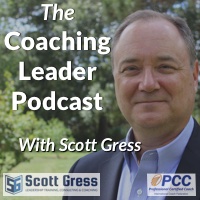
Not all change efforts work. Sometimes failure is self inflicted. Sometimes it is getting worn down from what you cannot control. Yet leadership is all about change and often there are some keys we are missing in the moment. What’s worse is we may not even know it. We may forget that change and improvement begin when there is dissatisfaction or disappointment. Change happens when things do not go well and when people are not happy. It is that disruption and that discontent and irritation that moves people to get involved. It gets people to expend some energy and engage. It is even the condition in which people take responsibility and lead for perhaps the very first time. That dissatisfaction also motivates real change.
But perhaps you as leader are in denial. You may look around and say, “I don’t see any major problems!” Maybe you think that all we really need to do is a tweak here and a tweak there. Really? How hard are we looking? Human beings are notoriously bad at objectively evaluating their own behavior and I would add, what is needed in their organizations. Noted as a top leadership thinker and executive coach, Marshall Goldsmith has said that 80,000 people were asked if they were at the top 10% of their professional group. 70% of people estimate that they are in the top 10%. 82% say they are in the top 20% and 98% say they are in the top half. Someone is mistaken! It is very easy to be self-deceived.
A problem which is closely related to being in denial or being self-deceived is to be stuck. You look around and perhaps you are not satisfied but you resign yourself to believing you can’t do anything about it. You have tried what you know to do. You have even attempted to implement some of the “best practices” but you have gotten no where. In fact you may have even gotten burned because you tried something that someone or some group didn’t like. You’ve got the scars to prove it. In this situation, instead of you as leader addressing problems and leading change, you have kind of thrown in the towel and let the current situation lead you. You are stuck.
So what can you do? How can you get back on track? How can you begin to lead much needed change?
- The first step is to give yourself some grace and attend to yourself and get healthy. Take stock in what you have tried and address your scars and your exhaustion. This may mean talking to someone professionally. It’s a healthy thing to honor yourself in this way. It may mean a visit to the doctor and an accountability partner. It may mean you join in with like minded people and friends who can encourage you to make it real and sustainable. Unless you address this first step and attend to yourself, the next steps will be pointless.
- Lead your own change well. Beyond your health and well being, grow in knowing your strengths, your weaknesses, your assumptions about people, your emotional reactions to what triggers you and how you address people and situations. This may mean a 360 evaluation and some challenging conversations with those who have the courage to tell you the truth. But as Travis Bradberry says in Emotional Intelligence 2.0, two thirds of us are not even aware of our own emotions when we experience them and so we are often led by our emotions rather than us leading our emotions. Knowing yourself well includes knowing your words, actions and emotions and then managing them well, especially when you are working with people. Hear the feedback and work a plan to improve. You are not doomed to always be the person who is angry, can’t listen, talks too much etc. You can change.
- Generate some short term wins. Listen to those you lead and hear what issues they see that need change and then help and support them to address the change. Give them permission and bless their efforts. They will not only feel listened to, respected and trusted but they will become more engaged, more enthused and after some short term wins they will be ready to take on the bigger challenge.
- Start to dream. What would you do if you had an extra 10 hours or another 100 volunteers? What have you always hoped you could accomplish but for some reason never took the first step? What would that first step look like? Don’t be deterred from beginning small and don’t be afraid to begin if you are not sure of what to do in step 7. Define the change. Define the reason for the change or the dream or the thing you always hoped for. Talk about it with those you lead. What do they think? What are their ideas? Who is inspired to do some homework, talk to the people who may know. Get the conversation started. Get the ball rolling. You don’t have to know all the answers or the most answers. Talk to people. Ask questions. Listen. Pray. Invite more and more people into the conversation. With some short term wins under your belt you are poised for bigger things. Dare to dream and invite people in. You will be surprised what will happen by God’s grace.
Sign up for our email newsletter with new blog posts and information and announcements:
Scott Gress is called by Lutheran Counseling Services and partners with the FL-GA District of the Lutheran Church as an independent contractor. He specializes in Leadership Training, Consulting, Coaching and Coach Training. Contact Scott to continue the conversation or experience a free sample coaching session. 561-542-4472, scottgress@me.com or scottgress.com
"Coaching leaders of leaders"
Check out the new: Coaching Leader Podcast!

